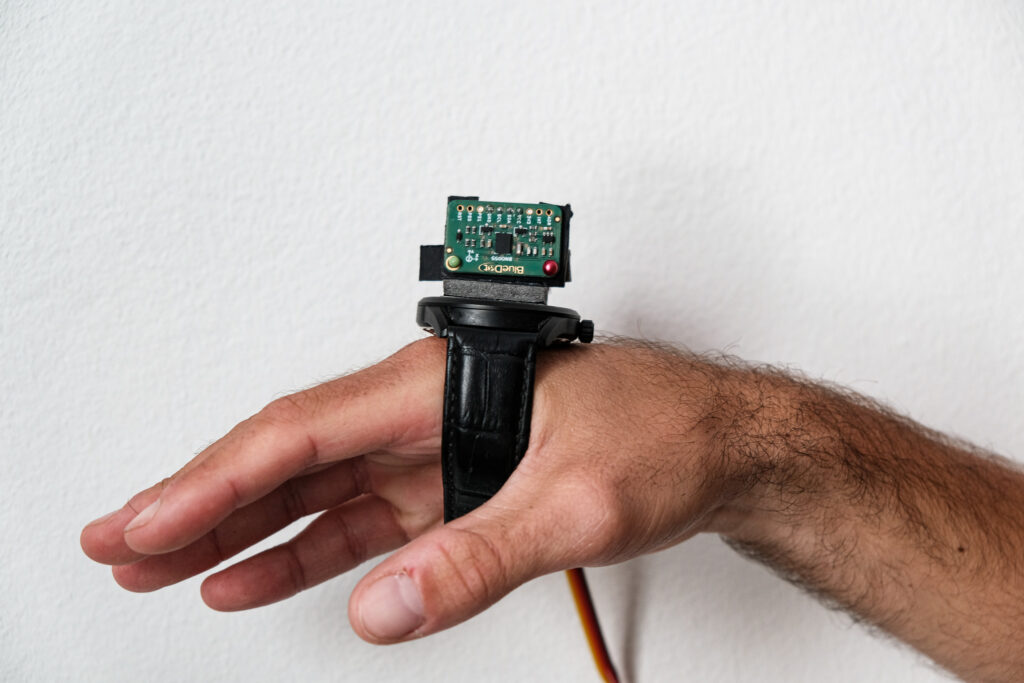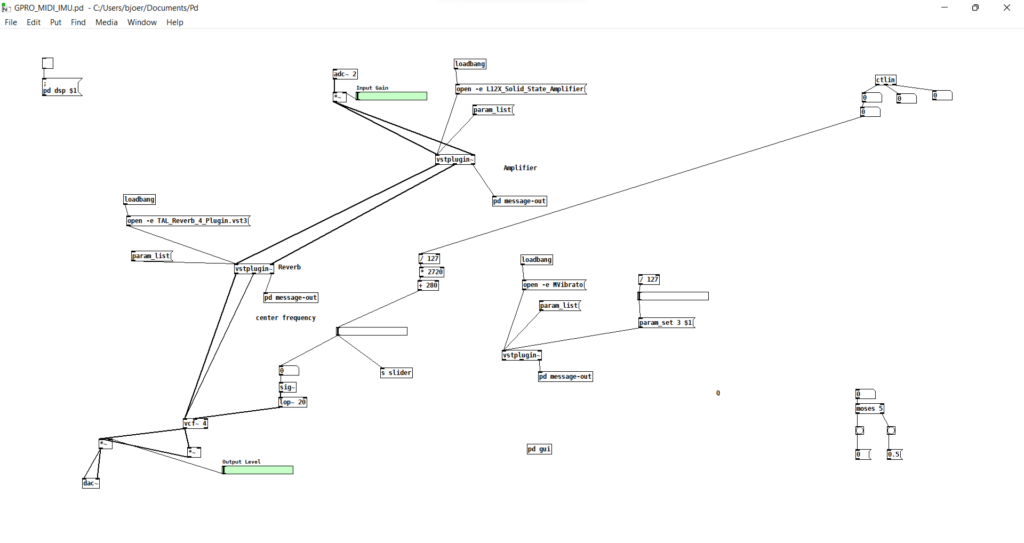Here, the first goal was to get basic sensors readings in general with the next step being to figure out what kind of readings are suitable for controlling effect parameters.
In order to establish which data is needed and how it should be used, the data values of x, y and z and their changes were analyzed while performing strumming movements with the sensor strapped to the hand.
With the IMU +Arduino outputting orientation data, it became clear that the y value could prove useful for controlling effect parameters while strumming the guitar. The range of values of y was analyzed for the up and down strumming movements and the established range subsequently constrained. Then the range was remapped to MIDI values from 0-127 and, using the same data transmission techniques as the left hand setup (so firstly serial bus communication and, subsequently, MIDI), sent to a Pure Data patch similar to the one for the left hand setup.
Next to orientation data, experiments were conducted with accelerometer as well as linear accelerometer data in the same manner.

Using IMU data in Pure Data
In the Pure Data patch, the incoming orientation and (linear) acceleration data was used to control several effects and their parameters. Using the aforementioned “vstplugin~” object, the following effects were tested:
- MTremolo by Melda Production
- MPhaser by Melda Production
However, the incoming IMU data proved to be not reasonable for these effects. The linear and normal acceleration data could not be used at all. The orientation data was working to some extent, but no practical application of its effects was immediately discovered.
The first success using the IMU data was the Wah-Wah effect. Using the “vcf~” object, a bandpass filter was made with an adjustable fader going from 280 Hz to 3000 Hz center frequency (the normal operating range of a Wah-Wah pedal) and a Q-factor of 4. Using the y value from the orientation data, the center frequency was controlled through strumming movements of the right hand. The resulting sound was similar to that of a “real” Wah-Wah pedal and could be achieved solely by the natural strumming performed during playing.
